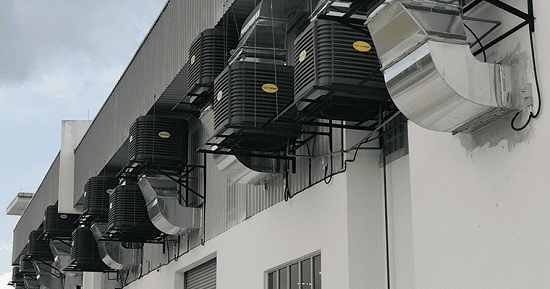Fresh Air Ventilation
Fresh Air Ventilation- Fresh air ventilation is the process of replacing stale indoor air with fresh outdoor air. It’s essential for maintaining good indoor air quality (IAQ) and overall health. Here’s a breakdown: Why is it important? Types of Ventilation Systems: Benefits of Fresh Air Ventilation Systems: If you’re considering a fresh air ventilation system, it’s best to consult with a qualified HVAC professional to determine the best system for your specific needs. What is Required Fresh Air Ventilation Required fresh air ventilation refers to the minimum amount of fresh outdoor air that must be brought into a building to maintain acceptable indoor air quality (IAQ). This is typically determined by building codes, industry standards, and health guidelines. The required amount of fresh air ventilation depends on several factors, including: Standards and Guidelines: Organizations like ASHRAE (American Society of Heating, Refrigerating and Air-Conditioning Engineers) and the EPA (Environmental Protection Agency) provide guidelines and standards for minimum ventilation rates. These standards often specify required air changes per hour (ACH), which is the number of times the entire volume of air in a space is replaced with fresh air in one hour. Importance of Required Fresh Air Ventilation: Ensuring Adequate Ventilation: To ensure that a building meets the required fresh air ventilation rates, it’s important to: By adhering to required fresh air ventilation standards, building owners and occupants can create healthier, more comfortable, and more energy-efficient indoor environments. Who is Required Fresh Air Ventilation Courtesy: SupplyHouse.com Required fresh air ventilation is typically the responsibility of: In summary: While the specific responsibilities may vary depending on the type of building and local regulations, it’s generally a shared responsibility among building owners, managers, designers, and contractors to ensure that adequate fresh air ventilation is provided and maintained. Disclaimer: This information is for general knowledge and guidance only and does not constitute legal or professional advice. For specific requirements and guidance, please consult with relevant building codes, industry standards, and qualified professionals. When is Required Fresh Air Ventilation Required fresh air ventilation is needed whenever a building is occupied. Here’s a breakdown: Key Considerations: Disclaimer: This information is for general knowledge and guidance only and does not constitute legal or professional advice. For specific requirements and guidance, please consult with relevant building codes, industry standards, and qualified professionals. Where is Required Fresh Air Ventilation Required fresh air ventilation is needed in all enclosed spaces that are normally used by humans. Here’s a breakdown of common areas where fresh air ventilation is crucial: Key Considerations: Disclaimer: This information is for general knowledge and guidance only and does not constitute legal or professional advice. For specific requirements and guidance, please consult with relevant building codes, industry standards, and qualified professionals. How is Required Fresh Air Ventilation Courtesy: CrewcutTV Required fresh air ventilation is typically achieved through a combination of natural and mechanical ventilation systems. Natural Ventilation: Mechanical Ventilation: Key Considerations: Disclaimer: This information is for general knowledge and guidance only and does not constitute legal or professional advice. For specific requirements and guidance, please consult with relevant building codes, industry standards, and qualified professionals. Case Study on Fresh Air Ventilation Improving Indoor Air Quality in a Modern Office Building Background: A newly constructed, high-rise office building in a bustling city center was experiencing complaints from occupants about stuffiness, headaches, and difficulty concentrating. Initial investigations revealed high levels of carbon dioxide (CO2) and volatile organic compounds (VOCs) originating from building materials and furnishings. Challenges: Solution: A multi-faceted approach was implemented: Results: Lessons Learned: This case study demonstrates that even in modern, energy-efficient buildings, a well-designed and implemented ventilation strategy can significantly improve indoor air quality, enhance occupant well-being, and contribute to a more sustainable and productive work environment. Disclaimer: This case study is presented for illustrative purposes and may not be applicable to all situations. Specific recommendations for fresh air ventilation should be based on a thorough assessment of individual building needs and local regulations. White paper on Fresh Air Ventilation The Critical Role of Fresh Air Ventilation in Building Health and Productivity 1. Introduction Indoor air quality (IAQ) has emerged as a paramount concern in the 21st century, significantly impacting human health, productivity, and overall well-being. This white paper explores the critical role of fresh air ventilation in achieving optimal IAQ within built environments, encompassing residential, commercial, and institutional spaces. 2. The Significance of Fresh Air Ventilation Fresh air ventilation involves the controlled introduction of outdoor air into indoor spaces, replacing stale air with oxygen-rich, pollutant-free air. Its significance lies in: 3. Types of Ventilation Systems 4. Key Considerations for Effective Ventilation 5. Emerging Trends in Ventilation Technology 6. Conclusion Fresh air ventilation is not merely a building code requirement; it is an essential component of creating healthy, productive, and sustainable indoor environments. By implementing effective ventilation strategies and continuously monitoring indoor air quality, building owners and occupants can significantly improve their well-being and enhance the overall quality of life. 7. Recommendations Note: This white paper provides a general overview of fresh air ventilation. Specific requirements and recommendations may vary based on local regulations, building codes, and individual circumstances. Disclaimer: This white paper is for informational purposes only and does not constitute professional advice. This white paper provides a concise overview of the importance and key considerations related to fresh air ventilation. It can be further expanded upon by including specific case studies, detailed technical information on ventilation systems, and a more in-depth discussion on the impact of IAQ on human health and productivity. Industrial Application of Fresh Air Ventilation Courtesy: AprilAire Fresh air ventilation plays a crucial role in maintaining a safe and productive industrial environment. Here are some key industrial applications: 1. Worker Health and Safety: 2. Process Efficiency: 3. Fire and Explosion Prevention: 4. Energy Efficiency: Specific Industrial Applications: Key Considerations for Industrial Ventilation: Conclusion Fresh air ventilation is an essential component of any well-designed and operated industrial facility. By providing a safe, healthy, and productive working







